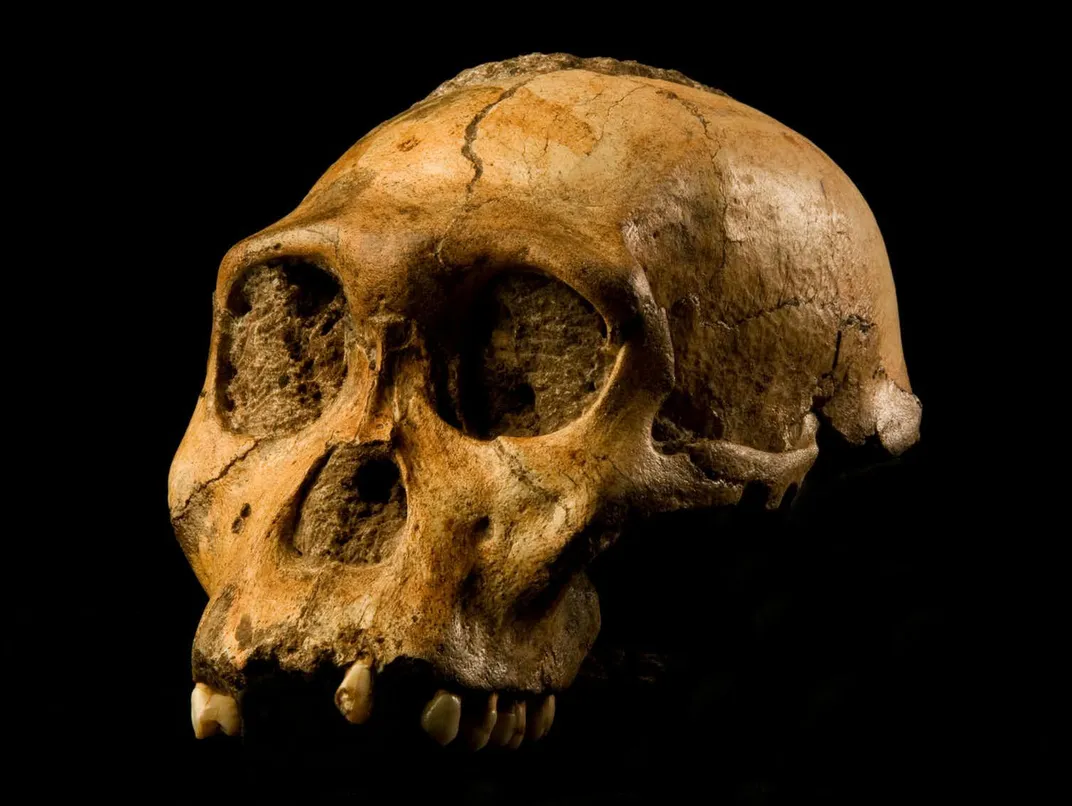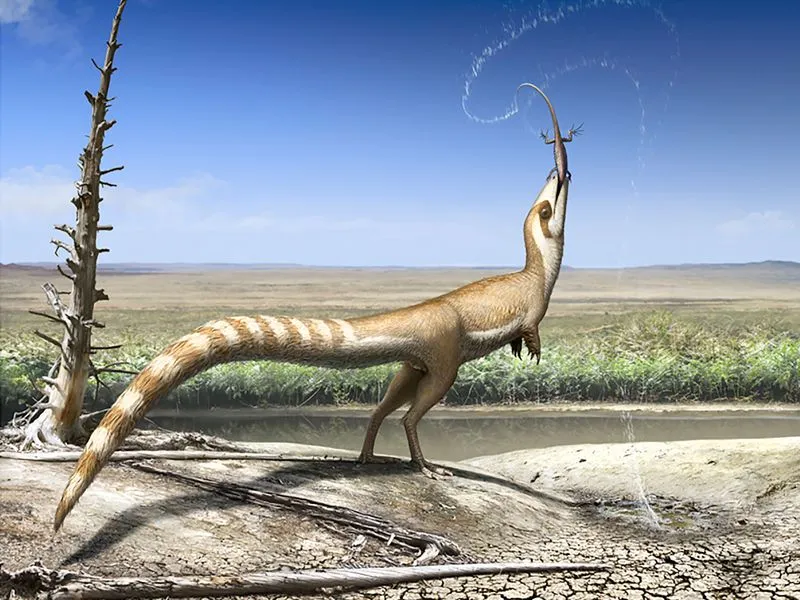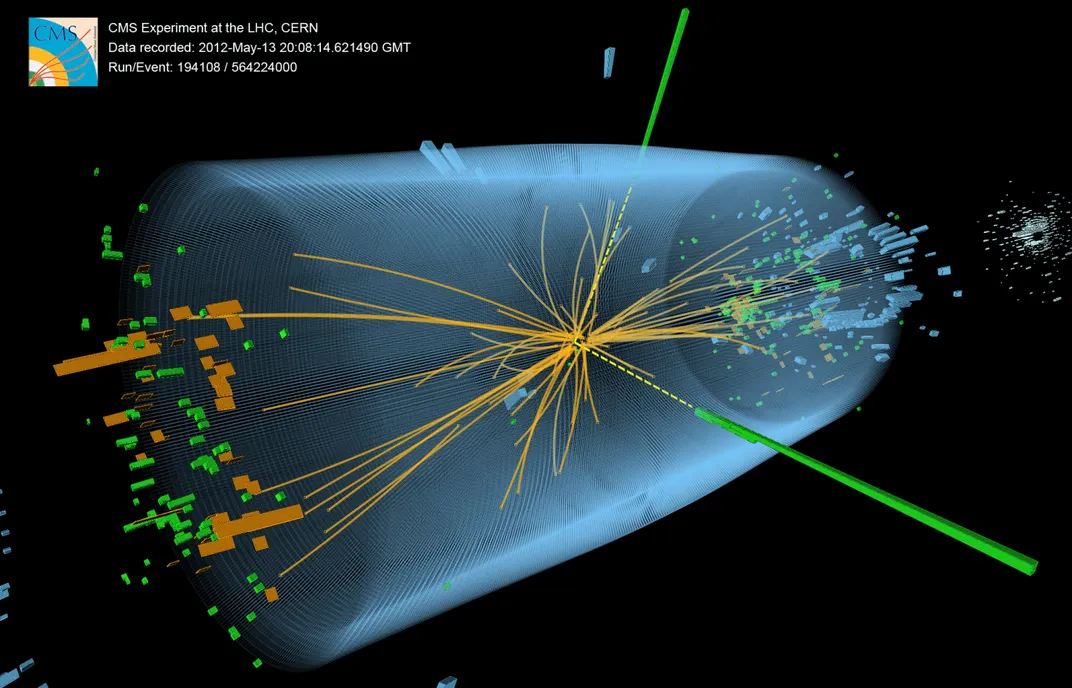The Top Ten Scientific Discoveries of the Decade
Breakthroughs include measuring the true nature of the universe, finding new species of human ancestors, and unlocking new ways to fight disease
:focal(800x601:801x602)/https://tf-cmsv2-smithsonianmag-media.s3.amazonaws.com/filer/d4/a8/d4a88985-6b69-41f0-85b3-4425e6c98596/science_rules5.jpg)
Millions of new scientific research papers are published every year, shedding light on everything from the evolution of stars to the ongoing impacts of climate change to the health benefits (or determents) of coffee to the tendency of your cat to ignore you. With so much research coming out every year, it can be difficult to know what is significant, what is interesting but largely insignificant, and what is just plain bad science. But over the course of a decade, we can look back at some of the most important and awe-inspiring areas of research, often expressed in multiple findings and research papers that lead to a true proliferation of knowledge. Here are ten of the biggest strides made by scientists in the last ten years.
New Human Relatives

The human family tree expanded significantly in the past decade, with fossils of new hominin species discovered in Africa and the Philippines. The decade began with the discovery and identification of Australopithecus sediba, a hominin species that lived nearly two million years ago in present-day South Africa. Matthew Berger, the son of paleoanthropologist Lee Berger, stumbled upon the first fossil of the species, a right clavicle, in 2008, when he was only 9 years old. A team then unearthed more fossils from the individual, a young boy, including a well-preserved skull, and A. sediba was described by Lee Berger and colleagues in 2010. The species represents a transitionary phase between the genus Australopithecus and the genus Homo, with some traits of the older primate group but a style of walking that resembled modern humans.
Also discovered in South Africa by a team led by Berger, Homo naledi lived much more recently, some 335,000 to 236,000 years ago, meaning it may have overlapped with our own species, Homo sapiens. The species, first discovered in the Rising Star Cave system in 2013 and described in 2015, also had a mix of primitive and modern features, such as a small brain case (about one-third the size of Homo sapiens) and a large body for the time, weighing approximately 100 pounds and standing up to five feet tall. The smaller Homo luzonensis (three to four feet tall) lived in the Philippines some 50,000 to 67,000 years ago, overlapping with several species of hominin. The first H. luzonensis fossils were originally identified as Homo sapiens, but a 2019 analysis determined that the bones belonged to an entirely unknown species.
These three major finds in the last ten years suggest that the bones of more species of ancient human relatives are likely hidden in the caves and sediment deposits of the world, waiting to be discovered.
Taking Measure of the Cosmos

When Albert Einstein first published the general theory of relativity in 1915, he likely couldn’t have imagined that 100 years later, astronomers would test the theory’s predictions with some of the most sophisticated instruments ever built—and the theory would pass each test. General relativity describes the universe as a “fabric” of space-time that is warped by large masses. It’s this warping that causes gravity, rather than an internal property of mass as Isaac Newton thought.
One prediction of this model is that the acceleration of masses can cause “ripples” in space-time, or the propagation of gravitational waves. With a large enough mass, such as a black hole or a neutron star, these ripples may even be detected by astronomers on Earth. In September 2015, the LIGO and Virgo collaboration detected gravitational waves for the first time, propagating from a pair of merging black holes some 1.3 billion light-years away. Since then, the two instruments have detected several additional gravitational waves, including one from a two merging neutron stars.
Another prediction of general relativity—one that Einstein himself famously doubted—is the existence of black holes at all, or points of gravitational collapse in space with infinite density and infinitesimal volume. These objects consume all matter and light that strays too close, creating a disk of superheated material falling into the black hole. In 2017, the Event Horizon Telescope collaboration—a network of linked radio telescopes around the world—took observations that would later result in the first image of the environment around a black hole, released in April 2019.
The Hottest Years on Record
Scientists have been predicating the effects of burning coal and fossil fuels on the temperature of the planet for over 100 years. A 1912 issue of Popular Mechanics contains an article titled “Remarkable Weather of 1911: The Effect of the Combustion of Coal on the Climate—What Scientists Predict for the Future,” which has a caption that reads: “The furnaces of the world are now burning about 2,000,000,000 tons of coal a year. When this is burned, uniting with oxygen, it adds about 7,000,000,000 tons of carbon dioxide to the atmosphere yearly. This tends to make the air a more effective blanket for the earth and to raise its temperature. The effect may be considerable in a few centuries.”
Just one century later, and the effect is considerable indeed. Increased greenhouse gases in the atmosphere have produced hotter global temperatures, with the last five years (2014 to 2018) being the hottest years on record. 2016 was the hottest year since the National Oceanic and Atmospheric Administration (NOAA) started recording global temperature 139 years ago. The effects of this global change include more frequent and destructive wildfires, more common droughts, accelerating polar ice melt and increased storm surges. California is burning, Venice is flooding, urban heat deaths are on the rise, and countless coastal and island communities face an existential crisis—not to mention the ecological havoc wreaked by climate change, stifling the planet’s ability to pull carbon back out of the atmosphere.
In 2015, the United Nations Framework Convention on Climate Change (UNFCCC) reached a consensus on climate action, known as the Paris Agreement. The primary goal of the Paris Agreement is to limit global temperature increases to 1.5 degrees Celsius over pre-industrial levels. To achieve this goal, major societal transformations will be required, including replacing fossil fuels with clean energy such as wind, solar and nuclear; reforming agricultural practices to limit emissions and protect forested areas; and perhaps even building artificial means of pulling carbon dioxide out of the atmosphere.
Editing Genes

Ever since the double-helix structure of DNA was revealed in the early 1950s, scientists have hypothesized about the possibility of artificially modifying DNA to change the functions of an organism. The first approved gene therapy trial occurred in 1990, when a four-year-old girl had her own white blood cells removed, augmented with the genes that produce an enzyme called adenosine deaminase (ADA), and then reinjected into her body to treat ADA deficiency, a genetic condition that hampers the immune system’s ability to fight disease. The patient’s body began producing the ADA enzyme, but new white blood cells with the corrected gene were not produced, and she had to continue receiving injections.
Now, genetic engineering is more precise and available than ever before, thanks in large part to a new tool first used to modify eukaryotic cells (complex cells with a nucleus) in 2013: CRISPR-Cas9. The gene editing tool works by locating a targeted section of DNA and “cutting” out that section with the Cas9 enzyme. An optional third step involves replacing the deleted section of DNA with new genetic material. The technique can be used for a wide range of applications, from increasing the muscle mass of livestock, to producing resistant and fruitful crops, to treating diseases like cancer by removing a patient’s immune system cells, modifying them to better fight a disease, and reinjecting them into the patient’s body.
In late 2018, Chinese researchers led by He Jiankui announced that they had used CRISPR-Cas9 to genetically modify human embryos, which were then transferred to a woman’s uterus and resulted in the birth of twin girls—the first gene-edited babies. The twins’ genomes were modified to make the girls more resistant to HIV, although the genetic alterations may have also resulted in unintended changes. The work was widely condemned by the scientific community as unethical and dangerous, revealing a need for stricter regulations for how these powerful new tools are used, particularly when it comes to changing the DNA of embryos and using those embryos to birth live children.
Mysteries of Other Worlds Revealed

Spacecraft and telescopes have revealed a wealth of information about worlds beyond our own in the last decade. In 2015, the New Horizons probe made a close pass of Pluto, taking the first nearby observations of the dwarf planet and its moons. The spacecraft revealed a surprisingly dynamic and active world, with icy mountains reaching up to nearly 20,000 feet and shifting plains that are no more than 10 million years old—meaning the geology is constantly changing. The fact that Pluto—which is an average of 3.7 billion miles from the sun, about 40 times the distance of Earth—is so geologically active suggests that even cold, distant worlds could get enough energy to heat their interiors, possibly harboring subsurface liquid water or even life.
A bit closer to home, the Cassini spacecraft orbited Saturn for 13 years, ending its mission in September 2017 when NASA intentionally plunged the spacecraft into the atmosphere of Saturn so it would burn up rather than continue orbiting the planet once it had exhausted its fuel. During its mission, Cassini discovered the processes that feed Saturn’s rings, observed a global storm encircle the gas giant, mapped the large moon Titan and found some of the ingredients for life in the plumes of icy material erupting from the watery moon Enceladus. In 2016, a year before the end of the Cassini mission, the Juno spacecraft arrived at Jupiter, where it has been measuring the magnetic field and atmospheric dynamics of the largest planet in the solar system to help scientists understand how Jupiter—and everything else around the sun—originally formed.
In 2012, the Curiosity rover landed on Mars, where it has made several significant discoveries, including new evidence of past water on the red planet, the presence of organic molecules that could be related to life, and mysterious seasonal cycles of methane and oxygen that hint at a dynamic world beneath the surface. In 2018, the European Space Agency announced that ground-penetrating radar data from the Mars Express spacecraft provided strong evidence that a liquid reservoir of water exists underground near the Martian south pole.
Meanwhile, two space telescopes, Kepler and TESS, have discovered thousands of planets orbiting other stars. Kepler launched in 2009 and ended its mission in 2018, revealing mysterious and distant planets by measuring the decrease in light when they pass in front of their stars. These planets include hot Jupiters, which orbit close to their stars in just days or hours; mini Neptunes, which are between the size of Earth and Neptune and may be gas, liquid, solid or some combination; and super Earths, which are large rocky planets that astronomers hope to study for signs of life. TESS, which launched in 2018, continues the search as Kepler’s successor. The space telescope has already discovered hundreds of worlds, and it could find 10,000 or even 20,000 before the end of the mission.
Fossilized Pigments Reveal the Colors of Dinosaurs

The decade began with a revolution in paleontology as scientists got their first look at the true colors of dinosaurs. First, in January 2010, an analysis of melanosomes—organelles that contain pigments—in the fossilized feathers of Sinosauropteryx, a dinosaur that lived in China some 120 to 125 million years ago, revealed that the prehistoric creature had “reddish-brown tones” and stripes along its tail. Shortly after, a full-body reconstruction revealed the colors of a small feathered dinosaur that lived some 160 million years ago, Anchiornis, which had black and white feathers on its body and a striking plume of red feathers on its head.
The study of fossilized pigments has continued to expose new information about prehistoric life, hinting at potential animal survival strategies by showing evidence of countershading and camouflage. In 2017, a remarkably well-preserved armored dinosaur which lived about 110 million years ago, Borealopelta, was found to have reddish-brown tones to help blend into the environment. This new ability to identify and study the colors of dinosaurs will continue to play an important role in paleontological research as scientists study the evolution of past life.
Redefining the Fundamental Unit of Mass
/https://tf-cmsv2-smithsonianmag-media.s3.amazonaws.com/filer/4d/4f/4d4f416e-6e5d-41fe-b6f7-3a79044a0aab/wattbalance_rsi_cover-1.jpg)
In November 2018, measurement scientists around the world voted to officially changed the definition of a kilogram, the fundamental unit of mass. Rather than basing the kilogram off of an object—a platinum-iridium alloy cylinder about the size of a golf ball—the new definition uses a constant of nature to set the unit of mass. The change replaced the last physical artifact used to define a unit of measure. (The meter bar was replaced in 1960 by a specific number of wavelengths of radiation from krypton, for example, and later updated to define a meter according to the distance light travels in a tiny fraction of a second.)
By using a sophisticated weighing machine known as a Kibble balance, scientists were able to precisely measure a kilogram according to the electromagnetic force required to hold it up. This electric measurement could then be expressed in terms of Planck’s constant, a number originally used by Max Planck to calculate bundles of energy coming from stars.
The kilogram was not the only unit of measure that was recently redefined. The changes to the International System of Units, which officially went into effect in May 2019, also changed the definition for the ampere, the standard unit of electric current; the kelvin unit of temperature; and the mole, a unit of amount of substance used in chemistry. The changes to the kilogram and other units will allow more precise measurements for small amounts of material, such as pharmaceuticals, as well as give scientists around the world access to the fundamental units, rather than defining them according to objects that must be replicated and calibrated by a small number of labs.
First Ancient Human Genome Sequenced

In 2010, scientists gained a new tool to study the ancient past and the people who inhabited it. Researchers used a hair preserved in permafrost to sequence the genome of a man who lived some 4,000 years ago in what is now Greenland, revealing the physical traits and even the blood type of a member of one of the first cultures to settle in that part of the world. The first nearly complete reconstruction of a genome from ancient DNA opened the door for anthropologists and geneticists to learn more about the cultures of the distant past than ever before.
Extracting ancient DNA is a major challenge. Even if genetic material such as hair or skin is preserved, it is often contaminated with the DNA of microbes from the environment, so sophisticated sequencing techniques must be used to isolate the ancient human’s DNA. More recently, scientists have used the petrous bone of the skull, a highly dense bone near the ear, to extract ancient DNA.
Thousands of ancient human genomes have been sequenced since the first success in 2010, revealing new details about the rise and fall of lost civilizations and the migrations of people around the globe. Studying ancient genomes has identified multiple waves of migration back and forth across the frozen Bering land bridge between Siberia and Alaska between 5,000 and 15,000 years ago. Recently, the genome of a young girl in modern Denmark was sequenced from a 5,700-year-old piece of birch tar used as chewing gum, which also contained her mouth microbes and bits of food from one of her last meals.
A Vaccine and New Treatments to Fight Ebola
/https://tf-cmsv2-smithsonianmag-media.s3.amazonaws.com/filer/94/69/946983e3-aa54-4eeb-add1-1eea8092071c/gettyimages-1183891526.jpg)
This decade included the worst outbreak of Ebola virus diseases in history. The epidemic is believed to have begun with a single case of an 18-month-old-boy in Guinea infected by bats in December 2013. The disease quickly spread to neighboring countries, reaching the capitals of Liberia and Sierra Leone by July 2014, providing an unprecedented opportunity for the transmission of the disease to a large number of people. Ebola virus compromises the immune system and can cause massive hemorrhaging and multiple organ failure. Two and a half years after the initial case, more than 28,600 people had been infected, resulting in at least 11,325 deaths, according to the CDC.
The epidemic prompted health officials to redouble their efforts to find an effective vaccine to fight Ebola. A vaccine known as Ervebo, made by the pharmaceutical company Merck, was tested in a clinical trial in Guinea performed toward the end of the outbreak in 2016 that proved the vaccine effective. Another Ebola outbreak was declared in the Democratic Republic of the Congo in August 2018, and the ongoing epidemic has spread to become the deadliest since the West Africa outbreak, with 3,366 reported cases and 2,227 deaths as of December 2019. Ervebo has been used in the DRC to fight the outbreak on an expanded access or “compassionate use” basis. In November 2019, Ervebo was approved by the European Medicines Agency (EMA), and a month later it was approved in the U.S. by the FDA.
In addition to a preventative vaccine, researchers have been seeking a cure for Ebola in patients who have already been infected by the disease. Two treatments, which involve a one-time delivery of antibodies to prevent Ebola from infecting a patient’s cells, have recently shown promise in a clinical trial in the DRC. With a combination of vaccines and therapeutic treatments, healthcare officials hope to one day eradicate the viral infection for good.
CERN Detects the Higgs Boson

Over the past several decades, physicists have worked tirelessly to model the workings of the universe, developing what is known as the Standard Model. This model describes four basic interactions of matter, known as the fundamental forces. Two are familiar in everyday life: the gravitational force and the electromagnetic force. The other two, however, only exert their influence inside the nuclei of atoms: the strong nuclear force and the weak nuclear force.
Part of the Standard Model says that there is a universal quantum field that interacts with particles, giving them their masses. In the 1960s, theoretical physicists including François Englert and Peter Higgs described this field and its role in the Standard Model. It became known as the Higgs field, and according to the laws of quantum mechanics, all such fundamental fields should have an associated particle, which came to be known as the Higgs boson.
Decades later, in 2012, two teams using the Large Hadron Collider at CERN to conduct particle collisions reported the detection of a particle with the predicted mass of the Higgs boson, providing substantial evidence for the existence of the Higgs field and Higgs boson. In 2013, the Nobel Prize in Physics was awarded to Englert and Higgs “for the theoretical discovery of a mechanism that contributes to our understanding of the origin of mass of subatomic particles, and which recently was confirmed through the discovery of the predicted fundamental particle.” As physicists continue to refine the Standard Model, the function and discovery of the Higgs boson will remain a fundamental part of how all matter gets its mass, and therefore, how any matter exists at all.
/https://tf-cmsv2-smithsonianmag-media.s3.amazonaws.com/accounts/headshot/bennett.jpg)


/https://tf-cmsv2-smithsonianmag-media.s3.amazonaws.com/accounts/headshot/bennett.jpg)